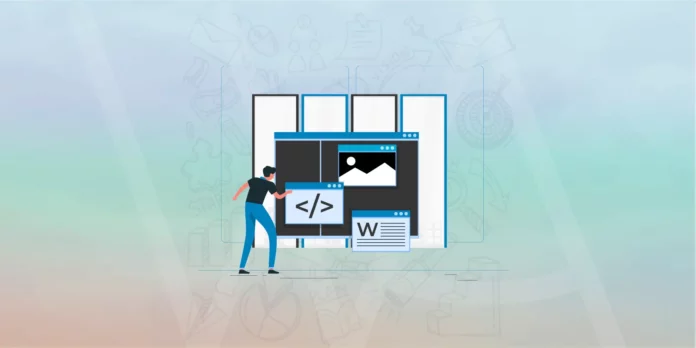To the uneducated person, Linux might sound like this super complicated operating system used by “professionals,” programmers or just an OS for nerds. Sure, not everyone can find benefits from using Linux, as your average user is just browsing the web and playing games most of the time.
Despite that, there are genuinely a lot of reasons as to why you’d want to use Linux instead of Windows. First off, you can customize it to your liking, and even find different versions or “distros” for it. It’s a completely free, secure, and open source.
Plus, it works really well; programmers love it. Since Linux is open-source, it shows great performance while running lengthy code in the background. And it isn’t annoying as Windows 10 when it comes to updates.
But this article isn’t about why you would want to install Linux. It’s about how to use Linux on a Windows computer. If you’ve already made up your mind, we’ll show you how to do so.
Ubuntu On Windows
Ubuntu is by far the most popular Linux “distro.” A distro is basically short for distributions of Linux, think of it as different versions or flavors of the same thing. Well, if you do want to run Ubuntu, the easiest method to do so is by using an application known as Wubi.
This is not a dual-booting scenario; it basically makes Linux your primary OS on PC. It creates a separate file that runs Ubuntu on your partition disk. It uses that drive as your Linux OS drive. There’s a different way of installing Ubuntu by making a bootable USB method.
The process is pretty simple; you download the app, install it, and choose the partition drive from there. From there on, just follow the instructions, and the next time you boot up, Ubuntu will be up and running.
This process to be pretty reliable and straightforward. If you are having trouble with the partition stuff, Wubi is a hassle-free and easy way to get Linux on your existing Windows machine.
Virtual Machines
Ever used an emulator to play old retro games? Well, those emulators basically use your PC’s hardware to “emulate” the console on your PC. Virtual machines are basically the same idea.
Keep in mind that this isn’t a way to install full-fledged Linux on your machine. Virtual machines run a version of Linux inside a window on your desktop. This means you can seamlessly switch between both operating systems. When you’re done with Linux, you can just minimize the virtual machine, and go back to Windows.
It’s not exactly as seamless as one might expect, but besides a few hiccups, it does actually work quite well. However, there is a bit of a compatibility issue. Depending on the virtual machine you use, some distros might not work as well.
For example, Ubuntu has a performance hindrance when running on VirtualBox. You’re going to have to do a bit of research to find the right distro. Once you find the right distro, a virtual machine is a pretty good option. It’s definitely a bit more hassle-free than dual booting the OS.
We found that VirtualBox and VMware Player work the best.
Cygwin and Linux Programs on PC
Cygwin is another great alternative if you don’t want to mess around with distros and a different OS on your PC. Instead of installing Linux on your PC, it gives you a general collection of tools to work with. It gives you a terminal similar to what you’d see on actual Linux. The command-line environment and most of the commands will be familiar to Linux users.
Cygwin is pretty straightforward to install itself. Just go to their site, download it, and run the installer. After that, you’ll see a list of different packages and tools you can install straight away.
Since Linux isn’t always the go-to operating system for the average consumer, a lot of Linux programs have already been ported over to Windows. Well, technically they don’t actually run on Windows, but they do have their own online versions which actually work quite well. So before you jump ship entirely to Linux, see if the programs you need exist on Windows already.
Final Thoughts
That’s pretty much all there is to it folks. Linux is great for a specific set of people. But if you are a gamer, we’d recommend Windows for sure. And if you are building a new PC, you might be looking for a new graphics card as well.
We recommend these Graphics Cards if you need a great value. Instead, if you’re in the AMD camp, have a look at the best AMD 1440p GPUs, which are also a great price/performance option.







I wasn’t able to locate a date for this article, but would have liked to see more on using the WSL 2 system and using the different distros.
Microsoft puting Linux distros as functional tools within Windows was a big step in the open-source world, considering Linux is the reigning king of the open-sourceworld. Not necessarily one specific distro, but you can’t think of open-source and not think about Linux. With the Microsoft store having distros From the calm Ubuntu to the daunting Kali Linux, mentioning this clement is important. Understandingworld. Not necessarily one specific distro, but you can’t think of open-source and not think about Linux. With the Microsoft store having distros From the calm Ubuntu to the daunting Kali Linux, mentioning this clement is important. Understanding how they operate compared to dual booting a GUI and using it in a shell capacity are extremely different, add on the kali overwhelming tools and misuse possibilities a heads up would be a good call.
I’m pretty comfortable with Linux distros and even I would like a bit more details. The article was great and very helpful, implying details on the WSL option would be extremely helpful. Or in other words please look at making content on this subject as well.
For anyone reading this WSL 2 is a way to run Linux distros,along with all their tools using a shell Interface (command prompt and PowerShell are examples of these), controlling the distro using commands and Syntax (like multi-command templates.) This may sound scary, but Linux users know that it’s the same way when using a GUI version anyway. For most distros the GUI may provide some shortcuts, but to really use Linux you need to know the cmdlets & syntax method. There are a large number of sites with all you need to know available to copy and paste as you get Familiar with it. Once you have spent some time with it, you will start to know how to do more & more like muscle memory.
Kali Linux is a distro that came as a predassesor to bacharch a distro with ethical hacking function, & with Kali the tools for this functionality built into it can be extremely overwhelming. They can also create potential problems when used incorrectly. Most nigh is to your system but ethical hacking (white hat) and non-ethical (black hat) are both hackers and use the same tactics and other tools. So playing around although unlikely could land you in legal hot water.
Learning & working with Linux is great, many use it in preference to other OS options and jumping in is great for most linux distros. However, its more fun knowing what to expect and not going into some more complex versions blind.
Using the versions on the windows store wasnt an option for me, but I can imagine it is a good way to get more familiar with Linux before completely adding another OS and setting up a Virtual-Machine or Dual-boot. Using the versions on the windows store wasnt an option for me, but I can imagine it is a good way to get more familiar with Linux before completely adding another OS and setting up a Virtual-Machine or Dual-boot.